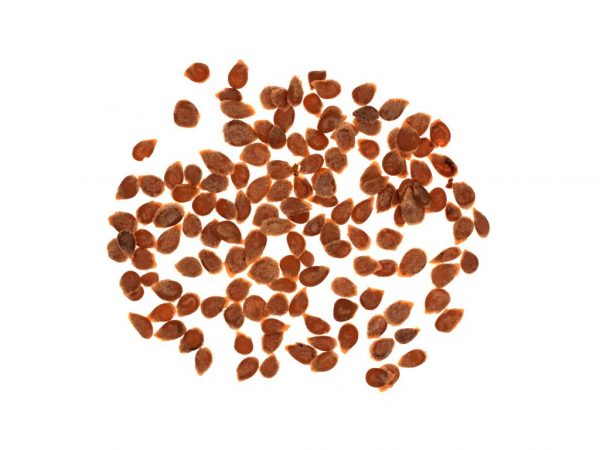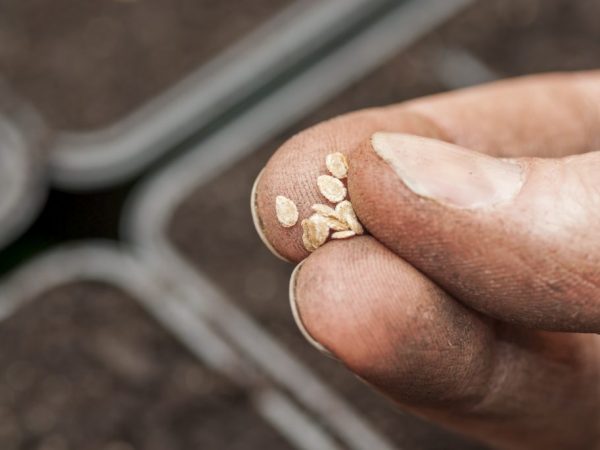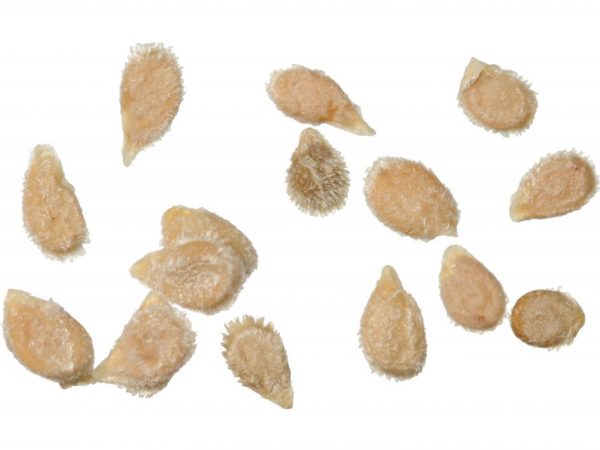How to process tomato seeds before planting
For growing tomatoes, gardeners begin to prepare in advance - with the onset of the first warm days. Processing tomato seeds before planting is an important step in growing. If the processing is carried out incorrectly, then a bountiful harvest may not be obtained.

Processing tomato seeds before planting
Determination of seed quality
First of all, you should sort the seed, choosing only those seeds from which healthy and strong plants are guaranteed to grow. Poorly selected, low-quality planting material will lead to a decrease in the yield and quality of tomatoes.
In the initial selection, even, symmetrical seeds are left. Hollow and small ones are removed. Too large ones should also be weeded out.
In addition, brine sorting can be used. Dissolve 1 tsp in 0.5 l of water. table salt. Then the seeds are poured into the solution - after 15-20 minutes, only pacifiers will remain on the surface.
It happens that seeds suitable for planting also float in the saline solution, however, with large volumes of planting material, this error can be neglected. The sorted seed can already be used for planting. But if additional processing of tomato seeds is made before sowing, it will improve the chances of good rooting and a bountiful harvest.
Warming up
Warming up the seed has a beneficial effect on germination. The material that has undergone such processing not only germinates well, but also guarantees a high yield of the crop. You should start warming up the seed in advance - 1.5-2 months before the intended sowing. It is better to do this during the heating season, using central heating batteries as a heat source.
Tatiana Orlova (Candidate of Agricultural Sciences):
The main purpose of this pre-sowing preparation technique is to disinfect seeds from disease-causing origins and mainly from viral infections. At high temperatures (above 45-50 degrees), viruses that could be in the inoculum die.
The seeds are wrapped in cotton cloth or poured into a specially sewn bag and hung near the radiator. The distance from the heat source to the bag is selected experimentally, depending on the temperature of the battery. You can arrange express warming up. To do this, a baking sheet with seeds poured onto parchment paper is placed in an oven preheated to 60-70 ° for about 3 hours. This treatment activates the drought tolerance of tomatoes.
Tatiana Orlova (Candidate of Agricultural Sciences):
Only dry seeds are heated! Heating the soaked, and even more so the swollen seeds leads to a loss of germination.
Hardening
Treatment of tomato seeds before sowing by hardening is carried out to facilitate the adaptation of tomatoes to daily temperature changes, as well as to increase resistance to drought and frost. With this treatment, weak seeds may die, but the seed that has passed it will certainly give a bountiful harvest.For hardening, the planting material is placed in a damp cloth, and it can be moistened with both water and solutions of micronutrients.
For 2 days, the seeds are kept at room temperature, after which they are placed in the refrigerator for 6-8 hours. The procedure is repeated for 1.5-2 weeks, until the first shoots appear and if there are no restrictions on preparation. The hardening treatment is effective not only for tomatoes, but also for all thermophilic crops.
Tatiana Orlova (Candidate of Agricultural Sciences):
Hardening is carried out when 1-2% of germinated seeds appear from the number of soaked ones. That is, before hardening, the seeds are soaked in clean water for an average of 3-4 days. Quenching is carried out with variable temperatures: during the day 12 hours at room temperature, 12 hours at low positive (+ 2-4 degrees).
Hardening can be carried out when growing pumpkin, cucumber, pepper, eggplant and melon.
Disinfection

Disinfection will destroy pests
The porous surface of the seed is a favorable habitat for various microorganisms and larvae. Decontamination treatment allows you to destroy pests even before they activate and damage an adult plant.
Potassium permanganate
Very often for the disinfection of tomatoes, a 1% solution of potassium permanganate is used. For its preparation, 1 g of potassium permanganate is diluted in 1 liter of water until a pink liquid is obtained, similar in color to fuchsia. You should not increase the concentration of the solution - it will not enhance its effect, but only damage it.
The seeds are placed in the solution for 15-20 minutes, after which they should be rinsed in clean water. It is important to remember that they should not be stuck together, otherwise it makes no sense to put the planting material in a solution with potassium permanganate, because she will not be able to completely wet them. Therefore, before disinfection, they are separated by gently rubbing in their hands.
Hydrogen peroxide
Peroxide treatment of tomato not only disinfects the seed, but also significantly increases germination. Before sowing into the soil, the planting material is soaked for 20 minutes in a 3% hydrogen peroxide solution. A solution of hydrogen peroxide can be purchased ready-made or made independently - for this, 6 tablets of hydroperite should be dissolved in 100 ml of water.
For long term soaking, a 0.6% solution is used.
For this, 1 part in 3% hydrogen peroxide is diluted in 5 parts of water. For germination, tomato seeds are placed in such a solution for 3 days. Disinfection with peroxide is a more gentle method compared to potassium permanganate. Some gardeners note that after disinfection with hydrogen peroxide, tomatoes have better germination, since they are less damaged during processing.
Biologicals
Specialized seed treatments are available at gardening stores. Some of them contain active chemicals and impurities that can penetrate deep into the seed and later appear in the plant and fruits. The use of such drugs is undesirable for edible crops, therefore, it is recommended to use biological products instead. Able to effectively fight pathogens and parasites, biological products are completely safe for humans and animals.
Baikal EM-1
The principle of action of this drug is that it promotes the reproduction of beneficial microflora, which gradually displaces and destroys unwanted microorganisms. Baikal EM-1 contains:
- Actinomycetes
- Saccharomycetes
- Nitrogen fixing bacteria
- Lactic acid bacteria
2 hours before use, the drug is diluted at the rate of 3 ml of active ingredient per 1 liter of water. The addition of a small amount of sugar to the solution further stimulates the bacteria contained in it. Microorganisms and their waste products will not only disinfect the surface of the soaked seeds, but also saturate them with the necessary nutrients.Baikal EM-1 also contributes to the reproduction of beneficial bacteria in the soil, so the drug can be used for watering tomatoes.
Fitosporin

Phytosporin can be used for seed treatment
Fitosporin also belongs to microbiological preparations. It is insensitive to ambient temperature and non-toxic, so it can even be used for indoor tomatoes.
The drug is available in three forms:
- Liquid. It can be ready-to-use, or it can be concentrated (requires dilution at the rate of 10 drops per 200 ml of water).
- Powder. Diluted in water according to package directions. So, for pre-sowing soaking of tomato seeds, 1.5 grams of powder is dissolved in 1 liter of water. The procedure takes 1.5-2 hours.
- Paste. To be diluted in water in a 1: 2 ratio (100 g of paste per 200 ml of water). This produces a solution similar to a liquid concentrate. Due to its resistance to temperature extremes, phytosporin can be used to soak seeds during hardening.
Saturation with trace elements
Soaking the seed in nutrient solutions containing various trace elements will help stimulate the growth of future tomatoes.
To prepare a solution based on wood ash, you need to stir 8-10 g of ash in 200 ml of water and leave to infuse for a day. Tomato seeds are wrapped in cheesecloth and soaked in the resulting infusion for about 5 hours.
Good results are obtained by using aloe juice, which also enhances the natural immunity of plants. The fabric with the seeds wrapped in it is impregnated with juice mixed with water in a 1: 1 ratio. After a day of soaking, the tomatoes will be ready for sowing.
Bubbling
This method came to gardeners from the aquarium industry. Bubbling involves long-term mixing of the seed while simultaneously saturating the environment with oxygen - this not only disinfects the seeds, but also increases their germination several times.
For such processing, it is not necessary to have an aquarium, you just need to purchase a compressor. When bubbling, a container of sufficient height is filled with water by about a third. It holds the seeds and the compressor tube. It is important to choose the right spray nozzle so that the air bubbles are small enough and evenly distributed throughout the entire water column. Then the seed will not accumulate in stagnant zones.
For tomatoes, stirring should be 15 to 20 hours. During this time, the seeds are mechanically cleaned of harmful microorganisms. Instead of water, you can use a solution containing trace elements or biological products - in this case, seedlings will appear in a few days.
Conclusion
When growing such a whimsical crop, many factors have to be taken into account: tomatoes grown from selected and processed seeds are much more resistant to temperature changes and less susceptible to disease. Hardened and properly stimulated plants will bear fruit that will adorn any table.



